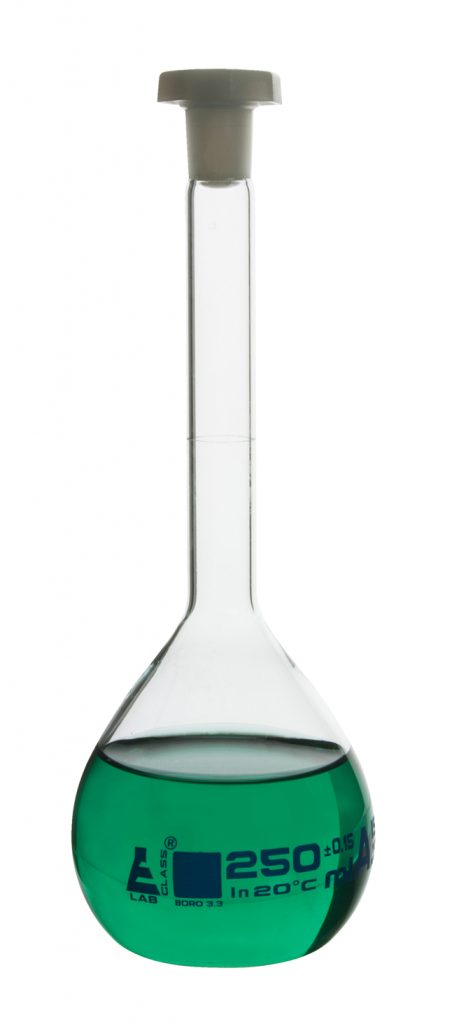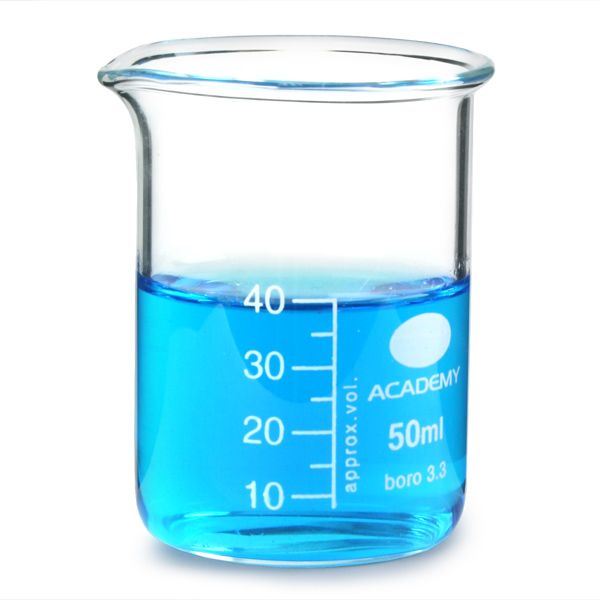Accurately preparing large quantities of concentrated hydroponic nutrients
When preparing concentrated solutions for hydroponics it is important to have a reproducible process that always generates the exact same results. If this is not done, you’ll obtain different nutrient concentrations between different batches and the concentrated nutrient additions to create the final nutrient solutions will yield inconsistent results. To address the potential variability of the concentrated solution manufacturing process we need to understand the different sources of error present and come up with ways to modify the process to generate more reproducible results. In this blog post I will talk about the largest source of error when preparing larger batches of concentrated nutrient solutions and how this error can be greatly reduced in order to obtain both more precise and accurate results.

The process of preparing hydroponic concentrated solutions involves two steps. First, you dissolve raw fertilizer salts into some volume of distilled or RO water and then you take this volume of solution to a desired final volume of solution using the same source of water. In a small scale setup this process is very simple to carry out, since we can just weight and dissolve all our salts in some fraction of the desired final volume and then use a precise instrument to measure total volume – most typically a volumetric flask – to take our solution to the final desired volume. For example if we desire to prepare 250 mL of concentrated nutrient solution and we use a well calibrated scale with +/- 0.001g of precision and an A grade volumetric flask with a precision of +/- 0.3mL, the error we expect to get from a 500mg salt will be +/- 4.77 ppm with a 99% confidence. Since the concentration of this salt in the concentrated solution is 2000 ppm, we get a final result of 2000 +/- 4.77 ppm. If both instruments are calibrated this is a very precise and accurate result.
When we move to larger amounts of solution we usually get better on the side of mass. This is because we can still get scales that weight with +/-0.1g precision even at weights exceeding 50kg, so our error as a fraction of the total measurement remain in the 0.01% to 1% region pretty easily. However things get way worse in terms of volume. If you are preparing 100 gallons of nutrient solution – around 378 liters – you will be able to weight the salts precisely and accurately but when it comes to measuring final volumes of solution, you are not going to be very lucky. The volume marks in tanks are widely inaccurate and are not even standardized to any level of significant precision or accuracy plus accurately measuring whether water is at a given level in a tank is a very error prone process because of how wide the tank area is.
Although we don’t usually have a way to adequately measure final volume, we do have a way to measure volume going into a tank in the form of flow meters, which can give us significant accuracy and precision. However, to be able to properly use the flow meter – know how much volume we need to actually get to the final volume we want – we must obtain information from a precise and accurate low scale process. To do this you can carry out the following steps:
- Get a precise and accurate scale (calibrated and at least +/- 0.001g in precision)
- Get a scale that can weight up to 500g that can measure with at least +/- 0.1g precision (if the one above does not).
- Get a 250 mL type A volumetric flask (should be around +/- 0.3 mL in precision).
- Get a 250mL beaker
- Get a plastic lab washing bottle and fill it with distilled water
- Calculate the salts you would need to dissolve to arrive at your desired concentrations at a 250mL final volume of concentrated solution
- Weight those salts and put them in a beaker, take note of all the exact weights added.
- Weight the dry, empty volumetric flask
- Add approximately half the volume of distilled water to the beaker and dissolve the salts
- Transfer to the volumetric flask, use the washing flask to fill the volumetric flask up to the calibration line (bottom of water meniscus is touching the line when viewed at eye level).
- Weight the flask with the solution
- Calculate the weight of water (weight of flask with solution – weight of flask – sum of weight of salts)
If the procedure above was carried out between 10-25C (50-77F) we can approximate the density of water to 1.0g/mL with little error (around 0.003g/mL). This means that we know the volume of water that was required to get to the desired final volume and we can then transfer this volume to our preparation procedure when we use a large tank. If the volume of water required for the preparation of the 250mL solution was just 230mL, then we can assume that the volume required to prepare 100 gallons will be 92 gallons, as the salts, when proportionately scaled, will take up the same volume and will require the same amount of water proportionately to reach the final desired volume.
When this type of procedure is done and an accurate and precise flowmeter is used, we can usually achieve concentration values at large scales that will be in the 0.1-1.0% error range, which is way better than anything that can be achieved by just using lines in tanks or procedures that use flow meters but ignore what the actual amount of water added needs to be in order to reach the desired concentration (many people achieve the salts take up no volume, which is a mistake). Having low errors in concentrated solutions means there will be less variability in final nutrient solution composition and therefore more reproducibility in crops.
